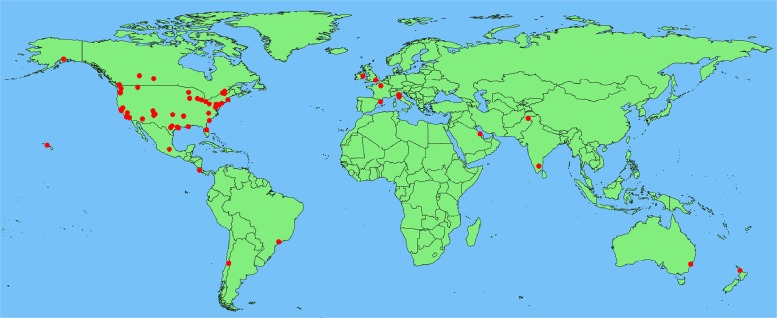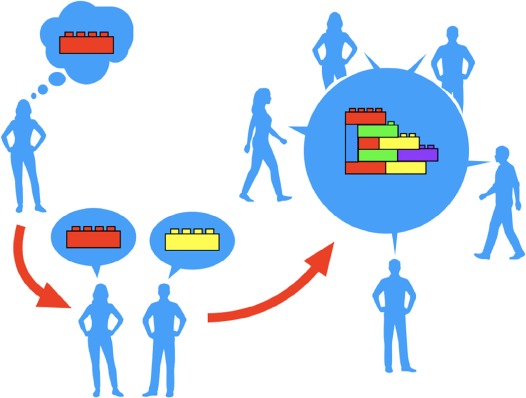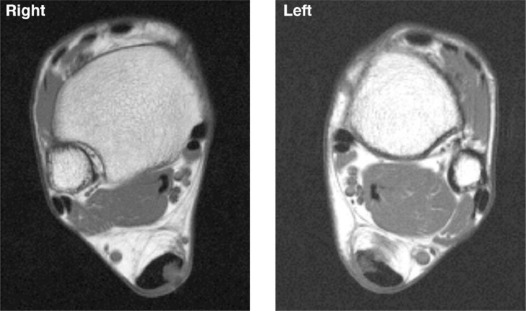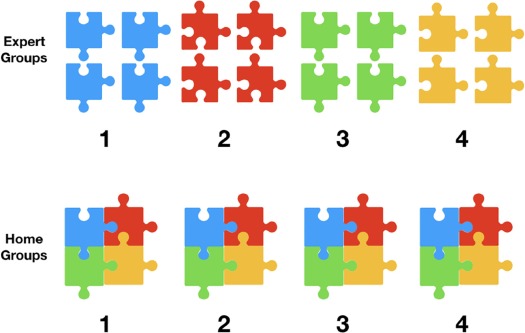Teaching is one of the important roles of an academic radiologist. Therefore, it is important that radiologists are taught how to effectively educate and, in turn, to act as role models of these skills to trainees. This is reinforced by the Liaison Committee on Medical Education which has the requirement that all residents who interact with and teach medical students must undergo training in effective methods of teaching. Radiologists are likely familiar with the traditional didactic lecture-type teaching format. However, there are many newer innovative teaching methods that could be added to the radiologist’s teaching repertoire, which could be used to enhance the traditional lecture format. The Association of University Radiologists Radiology Research Alliance Task Force on Noninterpretive Skills therefore presents a review of several innovative teaching methods, which include the use of audience response technology, long-distance teaching, the flipped classroom, and active learning.
Introduction
As radiologists, we are adept at interpreting medical images. However, how did we learn this information? Some of this knowledge came from the countless hours spent studying radiology books and journals. However, much of our understanding also came from being taught by others. Thinking back to the great teachers you had—what made them stand out? What made them effective teachers? What interesting techniques did they use to teach?
This review is relevant because as a radiologist you will find you are often called on to teach. Radiologists, especially in the academic setting, are tasked with the education of fellows, residents, and medical students. However, all radiologists, including those in private practice, find themselves in some teaching role—teaching fellow radiologists, other nonradiology physicians, technologists, and patients. Therefore, it is important that radiologists are taught how to effectively educate and, in turn, to act as role models of these skills to trainees.
This is reinforced by the Liaison Committee on Medical Education, whose Standard 9.1 requires all residents who interact with and teach medical students to undergo training in effective methods of teaching and evaluation .
Didactic lectures are a well-known form of teaching. However, there are many newer innovative teaching skills, pedagogical techniques, and forms of educational technology that could also be added to a radiologist’s teaching repertoire. These could be used to enhance lectures radiologists are already giving or be used in addition to the traditional lecture format.
The Association of University Radiologists Radiology Research Alliance Task Force on Noninterpretive Skills therefore presents a review of innovative teaching methods. Our goal is to present a practical compendium of useful tools and techniques that allow education to become more engaging, more interactive, and more effective:
Get Radiology Tree app to read full this article<
Part I
Audience Response Systems
Get Radiology Tree app to read full this article<
Background or History
Get Radiology Tree app to read full this article<
Get Radiology Tree app to read full this article<
Get Radiology Tree app to read full this article<
Get Radiology Tree app to read full this article<
Pedagogy, Not Technology
Get Radiology Tree app to read full this article<
Get Radiology Tree app to read full this article<
Get Radiology Tree app to read full this article<
21st Century Pedagogical Techniques
Get Radiology Tree app to read full this article<
Get Radiology Tree app to read full this article<
Get Radiology Tree app to read full this article<
Get Radiology Tree app to read full this article<
Get Radiology Tree app to read full this article<
Get Radiology Tree app to read full this article<
Get Radiology Tree app to read full this article<
Get Radiology Tree app to read full this article<
Get Radiology Tree app to read full this article<
Get Radiology Tree app to read full this article<
Get Radiology Tree app to read full this article<
Get Radiology Tree app to read full this article<
Get Radiology Tree app to read full this article<
Get Radiology Tree app to read full this article<
Get Radiology Tree app to read full this article<
Get Radiology Tree app to read full this article<
Get Radiology Tree app to read full this article<
Get Radiology Tree app to read full this article<
Get Radiology Tree app to read full this article<
Get Radiology Tree app to read full this article<
Get Radiology Tree app to read full this article<
Get Radiology Tree app to read full this article<
Get Radiology Tree app to read full this article<
Get Radiology Tree app to read full this article<
Get Radiology Tree app to read full this article<
Get Radiology Tree app to read full this article<
Part II
Long-distance Teaching
Get Radiology Tree app to read full this article<
Get Radiology Tree app to read full this article<
Get Radiology Tree app to read full this article<
Get Radiology Tree app to read full this article<
Get Radiology Tree app to read full this article<
Hardware Considerations
Get Radiology Tree app to read full this article<
Get Radiology Tree app to read full this article<
The Pedagogy of Online Conferencing
Get Radiology Tree app to read full this article<
Increasing Interactivity
Get Radiology Tree app to read full this article<
Get Radiology Tree app to read full this article<
Get Radiology Tree app to read full this article<
Social Aspects of Online Conferencing
Get Radiology Tree app to read full this article<
Get Radiology Tree app to read full this article<
Get Radiology Tree app to read full this article<
Get Radiology Tree app to read full this article<
Get Radiology Tree app to read full this article<
Get Radiology Tree app to read full this article<
Get Radiology Tree app to read full this article<
Get Radiology Tree app to read full this article<
Get Radiology Tree app to read full this article<
Get Radiology Tree app to read full this article<
Unexpected Spin-offs From Video Conferencing
Get Radiology Tree app to read full this article<
Get Radiology Tree app to read full this article<
Get Radiology Tree app to read full this article<
Part III
Flipped Classrooms
What Is a Flipped Classroom?
Get Radiology Tree app to read full this article<
Get Radiology Tree app to read full this article<
Get Radiology Tree app to read full this article<
Proponents of Flipped Learning Believe That It Enhances the Learning Experience—but Why?
Get Radiology Tree app to read full this article<
Get Radiology Tree app to read full this article<
Get Radiology Tree app to read full this article<
Get Radiology Tree app to read full this article<
Does a Flipped Classroom Model Work?
Get Radiology Tree app to read full this article<
Get Radiology Tree app to read full this article<
Get Radiology Tree app to read full this article<
Get Radiology Tree app to read full this article<
Get Radiology Tree app to read full this article<
Get Radiology Tree app to read full this article<
Get Radiology Tree app to read full this article<
How Does One Begin to Implement Flipped Learning Into Their Classroom or Learning Environment?
Get Radiology Tree app to read full this article<
Get Radiology Tree app to read full this article<
Get Radiology Tree app to read full this article<
Get Radiology Tree app to read full this article<
Get Radiology Tree app to read full this article<
Assessment of Student Learning
Get Radiology Tree app to read full this article<
Get Radiology Tree app to read full this article<
Part IV
Active Learning
Get Radiology Tree app to read full this article<
Get Radiology Tree app to read full this article<
Get Radiology Tree app to read full this article<
Get Radiology Tree app to read full this article<
Advantages of Active Learning
Get Radiology Tree app to read full this article<
Get Radiology Tree app to read full this article<
Research on Active Learning
Get Radiology Tree app to read full this article<
How to Perform Active Learning
Get Radiology Tree app to read full this article<
Interactive Lectures
Get Radiology Tree app to read full this article<
Get Radiology Tree app to read full this article<
Active Group-based Techniques
Get Radiology Tree app to read full this article<
Get Radiology Tree app to read full this article<
Get Radiology Tree app to read full this article<
Get Radiology Tree app to read full this article<
Get Radiology Tree app to read full this article<
Get Radiology Tree app to read full this article<
Get Radiology Tree app to read full this article<
Team-based Learning
Get Radiology Tree app to read full this article<
Get Radiology Tree app to read full this article<
Get Radiology Tree app to read full this article<
Get Radiology Tree app to read full this article<
Get Radiology Tree app to read full this article<
Get Radiology Tree app to read full this article<
Get Radiology Tree app to read full this article<
Games
Get Radiology Tree app to read full this article<
Get Radiology Tree app to read full this article<
Get Radiology Tree app to read full this article<
Get Radiology Tree app to read full this article<
Get Radiology Tree app to read full this article<
Get Radiology Tree app to read full this article<
Conclusion
Get Radiology Tree app to read full this article<
Get Radiology Tree app to read full this article<
Get Radiology Tree app to read full this article<
References
1. Liaison Committee on Medical Education : Functions and structure of a medical school. Standards for accreditation of medical education programs leading to the MD degree. Available at: http://lcme.org/publications/#Standards
2. Kay R.H., LeSage A.: Examining the benefits and challenges of using audience response systems: a review of the literature. Comput Educ 2009; 53: pp. 819-827.
3. Judson E., Sawada D.: Audience response systems in higher education: applications in cases. chap. 2Audience response systems: insipid contrivances or inspiring tools?.2006.Information Science PublishingHershey, PA:pp. 26-39.
4. Abrahamson A.L.: Audience response systems in higher education: applications and cases. chap. 1A brief history of networked classrooms: effects, cases, pedagogy, and implications.2006.Information Science PublishingHershey, PA:pp. 1-25.
5. Littauer R.: Instructional implications of a low-cost electronic student response system. Educ Technol 1972; 12: pp. 69-71.
6. Shapiro J.A.: Electronic student response found feasible in large science lecture hall: inexpensive, homemade system sparks student attention and participation. J Coll Sci Teach 1997; 26: pp. 408-412.
7. Hatch J., Jensen M., Moore R.: Manna from heaven or “clickers” from hell. J Coll Sci Teach 2005; 34: pp. 36-39.
8. Richardson M.L.: Audience response techniques for 21st century radiology education. Acad Radiol 2014; 21: pp. 834-841.
9. Awan O.A., Shaikh F., Kalbfleisch B., et. al.: RSNA diagnosis live: a novel web-based audience response tool to promote evidence-based learning. Radiographics 2017; 37: pp. 1111-1118.
10. Mathews J.: Just whose idea was all this testing? Fueled by technology, nation’s attempt to create a level playing field has had a rocky history. Washington Post 2006. A.6
11. Ravitch D.: The fall of the standard-bearers. Chron High Educ 2006; 52: pp. 844.
12. Mazur E.: Farewell, lecture?. Science 2009; 323: pp. 50-51.
13. Brezis M., Cohen R.: Interactive learning in medicine: Socrates in electronic clothes. QJM 2004; 97: pp. 47-51.
14. Mazur E.: Peer instruction: a user’s manual.1997.Prentice HallNew York City, NY
15. Fagen A.P., Crouch C.H., Mazur E.: Peer instruction: results from a range of classrooms. Phys Teacher 2002; 40: pp. 206-209.
16. Lasry N., Mazur E., Watkins J.: Peer instruction: from Harvard to the two-year college. Am J Phys 2008; 76: pp. 1066-1069.
17. Smith M.K., Wood W.B., Adams W.K., et. al.: Why peer discussion improves student performance on in-class concept questions. Science 2009; 323: pp. 122-124.
18. American College of Radiology Expert Panels : ACR appropriateness criteria. Available at: https://www.acr.org/Quality-Safety/Appropriateness-Criteria
19. Lewis P.: Promotion resources: teaching portfolio template. Available at: http://www.aur.org/Secondary-Alliances.aspx?id=514
20. Williamson K.B., Gunderman R.B., Cohen M.D., et. al.: Learning theory in radiology education. Radiology 2004; 233: pp. 15-18.
21. Rapaport H., Loomis J., Kagetsu N.J., et. al.: Megaconference: a radical approach to radiology resident education with full-day weekly conferences. J Am Coll Radiol 2013; 10: pp. 51-56.
22. Shah C.C., Deloney L.A., Donepudi C., et. al.: Establishment of a simple and inexpensive remote radiology conference. J Am Coll Radiol 2009; 6: pp. 884-885.
23. Lackey A.E., Pandey T., Moshiri M., et. al.: Productivity, part 2: cloud storage, remote meeting tools, screencasting, speech recognition software, password managers, and online data backup. J Am Coll Radiol 2014; 11: pp. 580-588.
24. Martinez J., McLaughlin M.K.: The best video conferencing software of 2017. PC Magazine 2017.
25. Richardson M.L., Petscavage J.M., Hunter J.C., et. al.: Running an online radiology teaching conference: why it’s a great idea and how to do it successfully. Acad Radiol 2012; 19: pp. 746-751.
26. Bhargava P., Dhand S., Lackey A.E., et. al.: Radiology education 2.0—on the cusp of change: part 2. ebooks; file sharing and synchronization tools; websites/teaching files; reference management tools and note taking applications. Acad Radiol 2013; 20: pp. 373-381.
27. Watters T.S., Cardona D.M., Menon K.S., et. al.: Aseptic lymphocyte-dominated vasculitis-associated lesion: a clinicopathologic review of an underrecognized cause of prosthetic failure. Am J Clin Pathol 2010; 134: pp. 886-893.
28. Case D.B., Chapman C.N., Freeman J.K., et. al.: Best cases from the AFIP: atypical presentation of polyostotic fibrous dysplasia with myxoma (Mazabraud syndrome). Radiographics 2010; 30: pp. 827-832.
29. Kransdorf M.J., Murphey M.D.: Diagnosis please. Case 12: Mazabraud syndrome. Radiology 1999; 212: pp. 129-132.
30. Richardson M.L.Intergalactic online MSK conference: cool case book 1.2011.BareBones BooksSeattle, WA:
31. Richardson M.L.Intergalactic online MSK conference: cool case book 2.2011.BareBones BooksSeattle, WA:
32. Richardson M.L.Intergalactic online MSK conference: cool case book 3.2013.BareBones BooksSeattle, WA:
33. Richardson M.L.Intergalactic online MSK conference: cool case book 4: focus on nuclear medicine.2014.Bare Bones BooksSeattle, WA:
34. Sharma N., Lau C.S., Doherty I., et. al.: How we flipped the medical classroom. Med Teach 2015; 37: pp. 327-330.
35. Network F.L.: Flip learning. Available at: http://flippedlearning.org
36. Hamdan N., McKnight P., McKnight K., et. al.: The flipped learning model: A white paper based on the literature review titled a review of flipped learning. Flipped Learning Network/Pearson/George Mason University2013.
37. Alvarez B.: Flipping the classroom: homework in class, lessons at home. Educ Digest 2012; 77: pp. 18.
38. Bergmann J., Sams A.: Flip your classroom: reach every student in every class every day. International Society for Technology in Education2012.
39. Wikipedia : Flipped classroom—Wikipedia, the free encyclopedia. Available at: https://en.wikipedia.org/w/index.php?title=Flipped_classroom&oldid=788738274
40. Prober C.G., Heath C.: Lecture halls without lectures—a proposal for medical education. N Engl J Med 2012; 366: pp. 1657-1659.
41. Pierce R., Fox J.: Vodcasts and active-learning exercises in a “flipped classroom” model of a renal pharmacotherapy module. Am J Pharm Educ 2012; 76: pp. 196.
42. Krisberg K.: Flipped classrooms: scrapping lectures in favor of active learning. AAMC News2017.
43. Belfi L.M., Bartolotta R.J., Giambrone A.E., et. al.: “Flipping” the introductory clerkship in radiology: impact on medical student performance and perceptions. Acad Radiol 2015; 22: pp. 794-801.
44. O’Connor E.E., Fried J., McNulty N., et. al.: Flipping radiology education right side up. Acad Radiol 2016; 23: pp. 810-822.
45. Bonnes S.L., Ratelle J.T., Halvorsen A.J., et. al.: Flipping the quality improvement classroom in residency education. Acad Med 2017; 92: pp. 101-107.
46. Fornari A., Poznanski A.: How-to guide for active learning. International Association of Medical Science Educators2015.
47. University of Pittsburgh’s University Center for Teaching & Learning : Designing in-class activities: Examples of active learning activities. Available at: http://www.cidde.pitt.edu/wp-content/uploads/2014/04/Designing_In-Class_Activities-Handout-Examples_Of_Active_Learning_Activities.pdf
48. Freeman S., Eddy S.L., McDonough M., et. al.: Active learning increases student performance in science, engineering, and mathematics. Proc Natl Acad Sci U S A 2014; 111: pp. 8410-8415.
49. Prince M.: Does active learning work? A review of the research. J Eng Educ 2004; 93: pp. 223-231.
50. Koles P.G., Stolfi A., Borges N.J., et. al.: The impact of team-based learning on medical students’ academic performance. Acad Med 2010; 85: pp. 1739-1745.
51. Koles P., Nelson S., Stolfi A., et. al.: Active learning in a year 2 pathology curriculum. Med Educ 2005; 39: pp. 1045-1055.
52. Gifkins J.: What is “Active Learning” and why is it important?. Available at: http://www.e-ir.info/2015/10/08/what-is-active-learning-and-why-is-it-important/
53. Roediger H.L., Karpicke J.D.: The power of testing memory: basic research and implications for educational practice. Perspect Psychol Sci 2006; 1: pp. 181-210.
54. Robins L.: How to make your teaching more interactive. Available at: https://depts.washington.edu/dbpeds/Interactive_Teaching_Methods.docx
55. Sterne G.M., Richardson M.L., Warren B.H.: Imaging findings in two cases of fluoroquinolone-induced Achilles tendinopathy. Radiol Case Rep 2006; 1: pp. 87-91.
56. Akl E.A., Pretorius R.W., Sackett K., et. al.: The effect of educational games on medical students’ learning outcomes: a systematic review: BEME guide no 14. Med Teach 2010; 32: pp. 16-27.
57. Akl E.A., Gunukula S., Mustafa R., et. al.: Support for and aspects of use of educational games in family medicine and internal medicine residency programs in the US: a survey. BMC Med Educ 2010; 10: pp. 26.
58. Roubidoux M.A., Chapman C.M., Piontek M.E.: Development and evaluation of an interactive web-based breast imaging game for medical students. Acad Radiol 2002; 9: pp. 1169-1178.
59. Dufenbach K.R.: Jeopardy for PowerPoint. Available at: https://sites.google.com/site/dufmedical/jeopardy
60. Khan M.N., Telmesani A., Alkhotani A., et. al.: Comparison of jeopardy game format versus traditional lecture format as a teaching methodology in medical education. Saudi Med J 2011; 32: pp. 1172-1176.
61. Shah B.A., Sever A., Cressman S.: Breast imaging bingo: an educational game to supplement the traditional assessment style. Med Sci Educ 2016; 26: pp. 383-387.
62. Bochennek K., Wittekindt B., Zimmermann S.Y., et. al.: More than mere games: a review of card and board games for medical education. Med Teach 2007; 29: pp. 941-948.
63. Saxena A., Nesbitt R., Pahwa P., et. al.: Crossword puzzles: active learning in undergraduate pathology and medical education. Arch Pathol Lab Med 2009; 133: pp. 1457-1462.



